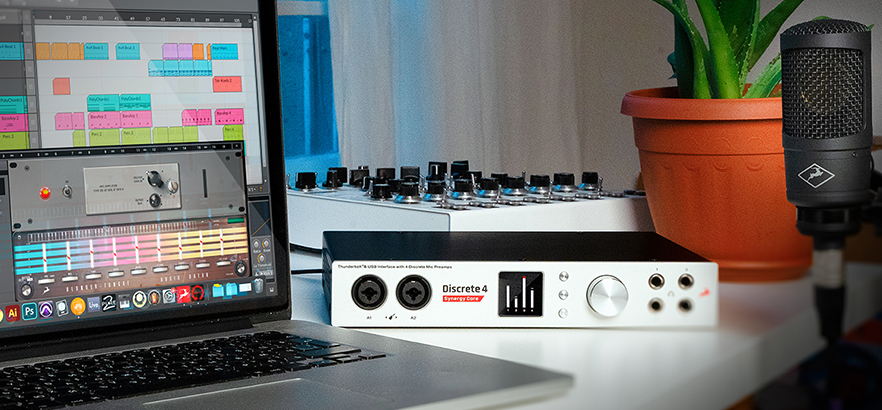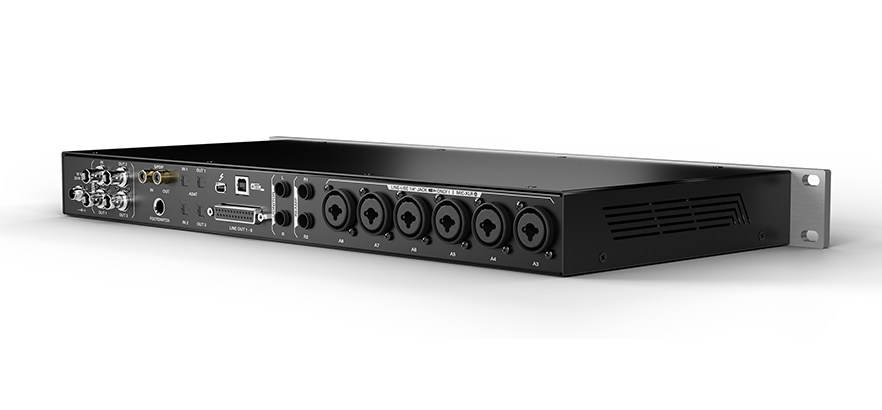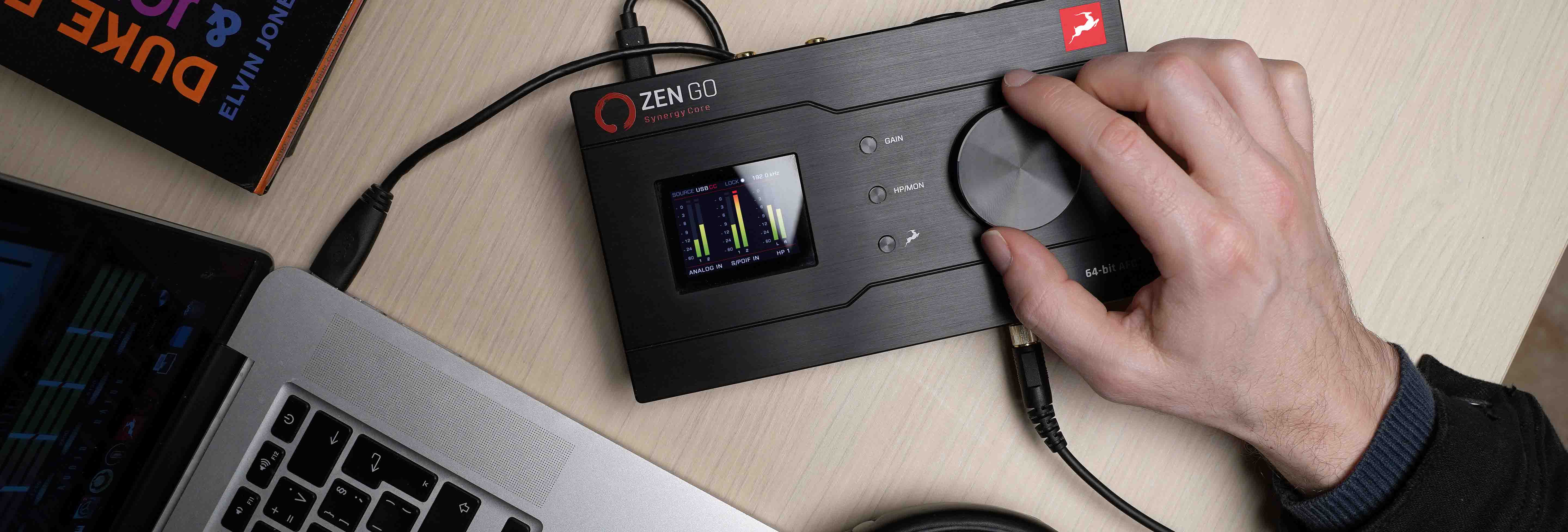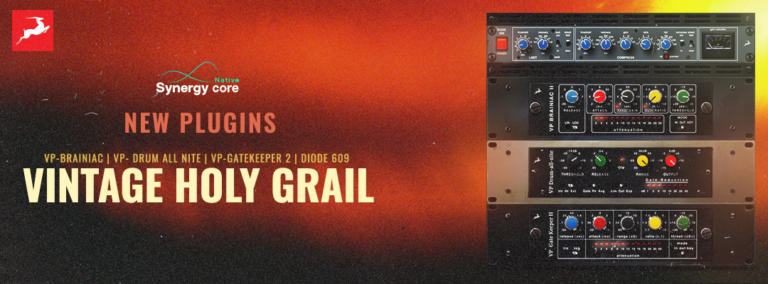Modern technology has democratized music recording. Nowadays anyone with a laptop can record or produce music from anywhere in the world. In fact, many people would say that computers are the centerpiece of modern-day studios since they combine the power of mixing consoles, recording media, virtual instruments, and effects processors. But we forget that there is one essential element in any setup that with its absence, it would be impossible to record or monitor any of our productions. We are talking about the audio interface.
Why are audio interfaces so important and what things should be considered when choosing one for your studio? Let’s unravel these questions.
Why an Audio Interface?

An audio interface is a device that converts any analog audio signal into a stream of digital values and transfers them to the computer. But it is also able to receive data from the computer and turn it back into an electrical signal to feed headphones, speakers, or analog gear. Essentially, they are small computers dedicated to turning analog signals into digital and back.
Most computers in the market nowadays come with a built-in audio interface that provides speakers, a headphone connector, and a built-in microphone. So why is an external audio interface needed? While these built-in elements are satisfactory for consumer applications, like listening to music or video calls, they are not suitable for professional music productions due to their limited quality and connectivity.
Having a dedicated audio interface highly improves the audio quality coming in and out of the computer. Its only task is focused on accurately sampling and converting both analog and digital signals. This way the computer can capture and playback sound at higher sample rates, which results in higher resolution audio. Not only that but, audio interfaces also improve the computer’s performance since they let the computer handle other processes and forget about any audio conversion.
Communication is key

The way the audio interfaces connect with the computer is paramount to determining the performance of the device itself. Throughout the years and as digital technology progresses these connections have seen different shapes and colours, but the main idea has always been to maximize the flow and speed of the data transfer.
Currently most common audio interfaces use USB and Thunderbolt protocols. While Thunderbolt 2 and 3 provide high-speed data transfer they are still very Apple computer-oriented. On the other hand, USB interfaces, although technically not as fast as Thunderbolt, have seen great improvements in their performance with the arrival of USB-C and are compatible with both PC and Mac.
For desktop computers, PCI interfaces that connect directly to the motherboard are also available. Finally, there is a new wave of devices that connect to the computer through the network which can be used by both desktops and laptops with high speed of data transfer.
The full conversion path of analog to digital and back requires time. The total time taken for a signal to travel through a recording system, from source to monitor system, is known as the round-trip latency. Audio interfaces communicate with the computer through packages of information. The computer temporarily holds these packages in buffer storage until the CPU requires them for use. The bigger the size of the buffer the more information the computer needs to process, which results in a larger round-trip latency. This buffer can be adjusted within the recording software and as a rule of thumb lower values should be used when recording, to decrease latency for monitoring in real-time and a larger buffer size should be used during mixing.
In and out

Audio interfaces also provide the connectivity necessary to use any studio equipment like external microphones, speakers, MIDI devices and even connect instruments like electric guitars or basses. These connections are grouped in Inputs and Output depending on whether the signal is coming into the unit or out.
There are usually three types of analogue inputs: line, microphone and instrument level inputs.
- Line level inputs receive signals from electronic devices like mixers, outboard hardware or synthesizers using TRS cables (quarter-inch jack) which transfer balanced signals.
- Microphone inputs, as their name suggests, are meant for connecting microphones and another kind of balanced connector known as XLR. Audio interfaces with this type of connection present a preamp to amplify the signal before it gets converted to digital. Any professional preamp will provide at least gain control and a phantom power switch which will send +48V through the cable to power any condenser microphone connected to it.
- Finally an Instrument input is where electric guitar, basses or acoustic pickups would be connected to. The connection is made through a TS connector (aka instrument cable) and the signal passes through a preamp just like a microphone does. The only difference is that before reaching the preamp the signal goes through a built-in DI box that turns the instrument level signal into microphone level signal.
All these components and connections happen inside the interface and in some cases, for example in smaller units, you’ll often find dual-purpose ‘combi’ sockets that combine both XLR for microphones and quarter-inch jack for a line or instrument input.
The output signals in all cases are line level signals using quarter-inch jacks. The only peculiarity is that most audio interfaces nowadays present two dedicated monitor outputs for the speakers with some sort of volume control. Although they can be used for other purposes if needed using the interface control software. Many units also offer one or two built-in headphone outputs with independent volume control allowing tracking or mixing through headphones.
Other connections that might be found in an audio interface are MIDI In and Out for connecting keyboards, controllers or synths; ADAT or SPDIF for sending and/or receiving digital data from other units: and wordclock connection.
Choose wisely

Choosing the right interface for your setup is an important step. The first thing that needs to be considered is what kind of work you are going to be doing. If you are a songwriter working mostly in the box and recording one or two sources, most likely you won’t need a big interface with tons of inputs, outputs and preamps. On the other hand, if you plan to record a band or build a studio that can expand as your career progresses you might be looking for a more fully featured solution.
Similarly, depending if you are working with a PC or Mac you should think about which protocol you should use. If you are on Mac a Thunderbolt interface could be interesting but if you are looking for an all-terrain unit probably a USB would be more fitting.
Some interfaces, like our Synergy Core line, add digital signal processing (DSP) which allows running specific software or emulations through the units without the need of the computer’s processing. If you like to track with effects or free-up more computer resources during mixing, these kinds of audio interfaces could be a good choice.
We hope this article showed you the importance of audio interfaces and will help you make a more educated decision when choosing one for your studio. If you want to learn about our line of desktop and professional audio interfaces, visit our dedicated webpage.









